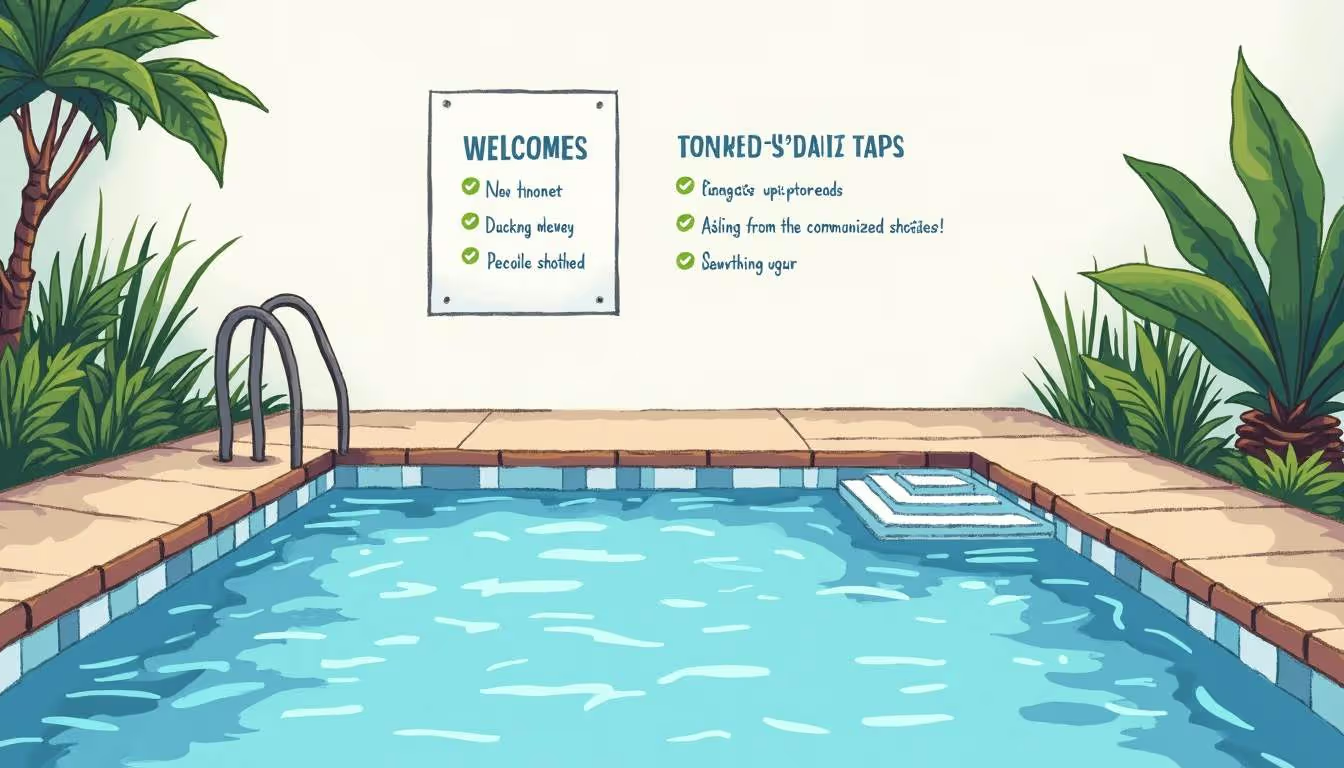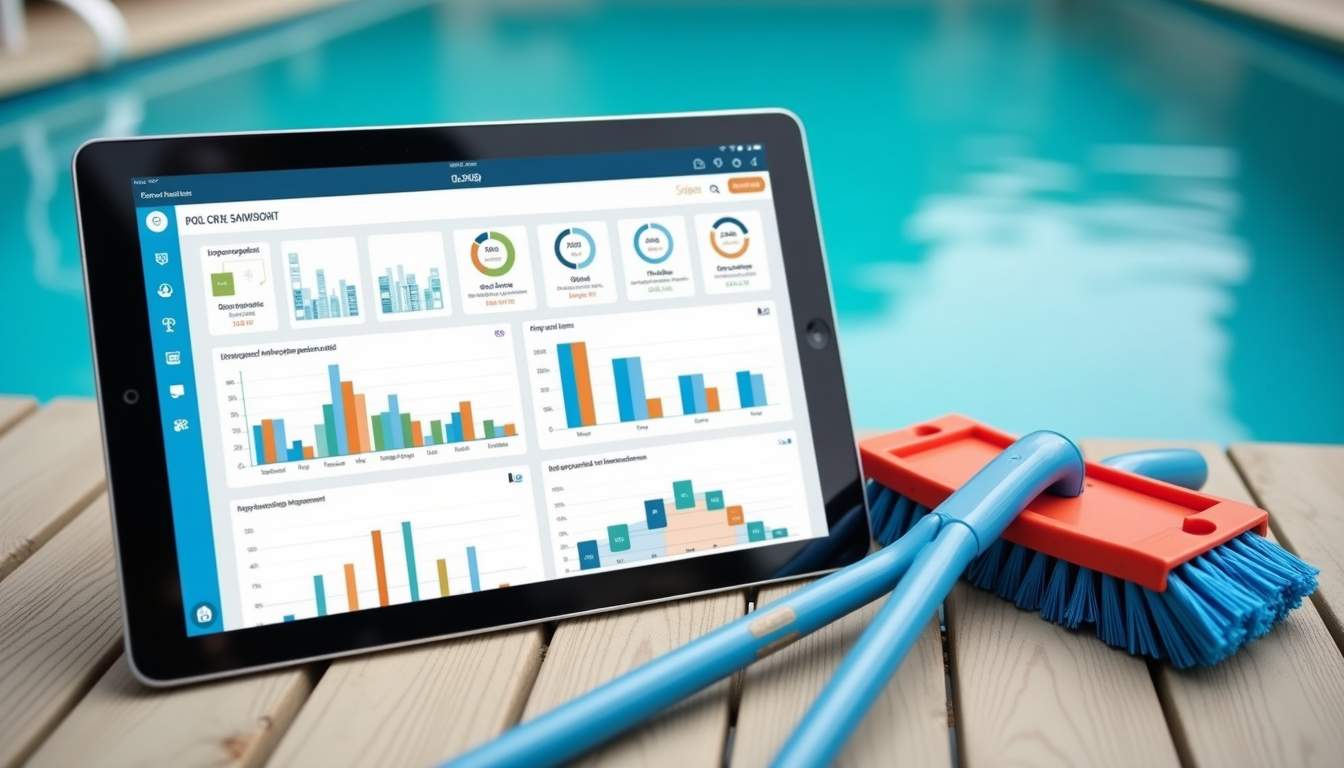Effective Strategies for Onboarding a New Pool Service Customer
Onboarding new pool service customers is more than just a transactional process—it’s the foundation for a lasting relationship built on trust, clarity, and satisfaction. In a competitive industry where customer retention is key, delivering a seamless and personalized onboarding experience can set your service apart and encourage long-term loyalty.
This article explores proven strategies to onboard new pool service customers effectively, combining clear communication, streamlined processes, proactive engagement, and smart use of technology. Whether you’re a seasoned pool service provider or just starting out, these insights will help you create an exceptional onboarding journey that delights customers and drives business growth.
Start Strong with Personalized Communication and Clear Expectations
Welcome Customers Warmly and Personally
The first impression matters immensely. When a new customer signs up for your pool service, a personalized welcome message can make them feel valued and excited about the partnership. This could be a handwritten note, a customized email, or even a welcome video introducing your team and outlining what they can expect.

Warmth and enthusiasm at this stage help build rapport and set a positive tone for the relationship. It reassures customers that they’ve made the right choice and that your team is ready to provide attentive, professional care for their pool. Additionally, consider including a brief overview of your company’s history and values in your welcome message. Sharing your story can create a deeper connection and help customers feel aligned with your mission, fostering loyalty from the very beginning. You might also want to highlight any unique features of your service, such as eco-friendly cleaning products or advanced technology used in pool maintenance, which can further enhance their excitement about your services.
Set Clear and Transparent Expectations
One of the biggest causes of customer dissatisfaction is misaligned expectations. Clearly communicate the scope of your services, including what’s covered in regular maintenance visits, any additional services available, and the typical schedule for visits. Make sure customers understand any preparations they need to make before service appointments, such as clearing pool areas or securing pets.
Providing this clarity upfront reduces confusion and builds trust. Customers appreciate knowing exactly what to expect and when, which minimizes surprises and helps them feel confident in your service. To further enhance this transparency, consider creating a detailed service brochure or an FAQ section on your website that addresses common questions and concerns. This resource can serve as a handy reference for customers, ensuring they have access to all the information they need at their fingertips. Additionally, regular updates via email or text about upcoming service appointments or any changes to the schedule can keep customers informed and engaged, reinforcing their trust in your commitment to excellent service.
Simplify Onboarding with Organized Documentation and Training
Provide Easy-to-Access, Concise Documentation
While it’s important to give customers all the necessary information, overwhelming them with lengthy paperwork can be counterproductive. Instead, offer well-organized digital materials that are easy to navigate. A dedicated online portal or a welcome packet with key points summarized clearly can be very effective.

Include essential information such as service schedules, contact details, payment options, and troubleshooting tips. This approach empowers customers with the knowledge they need without causing information overload. Additionally, consider integrating a search function within your documentation portal. This feature allows customers to quickly find specific topics or answers to their questions, enhancing their experience and reducing frustration. By streamlining access to information, you can foster a sense of confidence and independence in your customers, encouraging them to engage more actively with your services.
Offer Multi-Format Training and Resources
Every customer learns differently. Some prefer reading detailed guides, while others benefit more from visual or interactive content. Providing training materials in various formats—such as written FAQs, short video tutorials, and live webinars—can accommodate different preferences and help customers feel more comfortable managing their pool care.
For example, a video demonstrating how to check water chemistry or operate the pool equipment can be invaluable for new pool owners. This not only educates but also reduces the volume of basic support inquiries, freeing up your team to focus on more complex issues. Furthermore, consider incorporating interactive elements such as quizzes or checklists at the end of training modules. These tools can reinforce learning and ensure that customers retain critical information. Engaging customers in this way not only enhances their understanding but also creates a more memorable onboarding experience, ultimately leading to higher satisfaction and loyalty.
Engage Proactively with Regular Follow-Ups and Support
Schedule Periodic Check-Ins to Build Relationships
Onboarding doesn’t end after the first service visit. Scheduling regular check-ins—whether by phone, email, or text—shows customers that you care about their experience and are committed to their satisfaction. These touchpoints provide opportunities to answer questions, gather feedback, and address any concerns before they escalate. By establishing a routine of follow-ups, you create a sense of reliability and trust, which can transform a one-time customer into a long-term partner.
Proactive engagement can significantly boost customer retention. According to industry insights, customers who feel supported and heard are more likely to remain loyal and recommend your services to others. Additionally, these interactions can be tailored to the customer's specific needs, allowing you to offer personalized solutions that resonate with them. For instance, if a customer mentions a particular challenge during a check-in, you can follow up with resources or tips that directly address their situation, reinforcing your commitment to their success.
Maintain Accessible and Responsive Support Channels
Providing multiple ways for customers to reach out—such as a dedicated phone line, email support, or an online chat portal—ensures they can get help when needed. Fast, knowledgeable responses build confidence and demonstrate professionalism. Moreover, consider the importance of response times; customers appreciate quick resolutions, and studies show that timely support can significantly enhance overall satisfaction. By setting clear expectations for response times and consistently meeting them, you can further solidify your reputation as a reliable partner.
Consider implementing a ticketing system or customer relationship management (CRM) platform to track inquiries and resolutions efficiently. This organized approach helps maintain high service standards and prevents issues from falling through the cracks. Furthermore, leveraging data from these systems can provide valuable insights into common customer concerns, allowing you to proactively address recurring issues and improve your service offerings. Regularly analyzing this data can also help you identify trends and adapt your strategies, ensuring that you remain aligned with your customers' evolving needs and preferences.
Leverage Technology to Streamline Onboarding and Service Delivery
Automate Scheduling and Communication
Manual scheduling and follow-ups can be time-consuming and prone to errors. Utilizing software tools to automate appointment bookings, send service reminders, and follow-up messages not only saves time but also improves accuracy and customer experience.
Automated notifications keep customers informed and reduce no-shows, while freeing your team to focus on delivering quality service. Integration with calendar apps and SMS alerts can make these communications seamless and convenient. Furthermore, employing chatbots for initial inquiries can enhance customer engagement by providing instant responses to common questions, thereby streamlining the onboarding process. This allows your team to dedicate more time to complex customer needs, ultimately fostering a more responsive and efficient service environment.
Use Data to Personalize Service and Monitor Progress
Modern pool service platforms allow providers to track service history, customer preferences, and equipment details. This data enables personalized recommendations and timely interventions, such as alerting customers to seasonal maintenance needs or potential issues detected during visits.
By leveraging technology to gain insights into each customer’s unique pool setup and usage patterns, you can tailor your services more effectively, enhancing satisfaction and loyalty. Additionally, utilizing analytics tools can help identify trends in service requests or common issues that arise, allowing your business to proactively address these concerns. This not only improves operational efficiency but also positions your company as a trusted advisor in pool maintenance, making customers more likely to rely on your expertise for their long-term needs.
Encourage Referrals and Continuously Improve Through Feedback
Implement Referral Programs to Grow Your Customer Base
Word-of-mouth remains one of the most powerful marketing tools in the pool service industry. Encourage satisfied customers to refer friends and family by offering incentives such as discounts, free services, or gift cards. A well-structured referral program not only rewards loyal customers but also helps expand your reach organically.

Make it easy for customers to participate by providing referral links, shareable content, or simple sign-up forms. Tracking referrals through your CRM ensures you can recognize and reward advocates promptly.
Solicit and Act on Customer Feedback
Regularly gathering feedback through surveys, reviews, or informal conversations provides valuable insights into what’s working and where improvements are needed. Demonstrating that you listen and act on customer input builds trust and shows a commitment to excellence.
Use feedback to refine your onboarding process, update training materials, and enhance service offerings. Over time, this continuous improvement cycle will strengthen your reputation and customer satisfaction.
Conclusion: Building Loyalty Starts with a Thoughtful Onboarding Experience
Effective onboarding is a critical step in establishing a successful pool service relationship. By combining personalized communication, simplified documentation, proactive engagement, smart technology use, and a focus on referrals and feedback, pool service providers can create a welcoming and efficient onboarding process that delights customers and fosters long-term loyalty.
Investing time and resources into these strategies not only improves customer satisfaction but also drives business growth through retention and word-of-mouth. In an industry where trust and reliability are paramount, a well-executed onboarding experience is your best tool for standing out and succeeding.








